Drafts by Nedyalko Ovcharov
The paper presents a runiform inscription from a golden ring found near Shumen Bulgaria. The insc... more The paper presents a runiform inscription from a golden ring found near Shumen Bulgaria. The inscription is one of the longest Bulgarian runiform inscriptions discovered so far. It contains a large number of unique runiform characters which are compared with characters from several other runiform inscriptions. The article offers also an overview of the author's unsuccessful but fruitful attempts at deciphering the inscription.
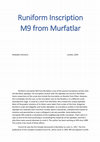
Runiform inscription M9 from Murfatlar is one of the several inscriptions written with the Murfat... more Runiform inscription M9 from Murfatlar is one of the several inscriptions written with the Murfatlar alphabet. All inscriptions written with this alphabet are found in Murfatlar. Some researchers of the script also include the inscription on Rosette from Pliska. However, this is probably not the case, as the inscription cast on the Rosette is in a different script development stage. It could be a monk from Murfatlar who created this unique alphabet. Most of the graphic solutions of its letters were taken from scripts of the time- Bulgarian Runiform script and Glagolitic and Cyrillic alphabets. As inscriptions written in the Murfatlar alphabet are relatively short and their number doesn't exceed 60, a decipherment based on statistics and peculiarities or even a bilingual is not very possible. Some believe that inscription M9 could be a translation of the neighbouring Cyrillic inscription. That's why it is seen as one of the most promising in unravelling the mysteries of the alphabet, and that's why there were several attempts to crack it. The author has been working on M9 since 1989. This article is the result of those efforts.
Who is the Madara Rider? Many tried to answer this question. They did their best based on the evi... more Who is the Madara Rider? Many tried to answer this question. They did their best based on the evidence they had. The first scientist who visited and made a drawing of Madara Relief, Felix Kaniz, saw the name Severus written next to the monument and concluded that Madara Rider was a Roman emperor. Later, Constantin Jireček, based on tablets of Thracian Rider discovered in the region, advanced the idea that Madara Relief was a large Thracian Rider. However, when brothers Karel and Hermin Škorpil made a scaffolding and copied the inscriptions surrounding the monument, the idea that Madara Rider is Kan Krum was born. The list of names has grown bigger since then: Kan Tervel, God Tangra, God Mithra, Unknown Hero and Krali Marko. Shall we pick a name and quit the quest? This article answers the question on the base of new evidence.
Karel Shkorpil introduced the Standing Stones, or Devtashlar, found in the plain of Pliska, to sc... more Karel Shkorpil introduced the Standing Stones, or Devtashlar, found in the plain of Pliska, to science for the first time. He also had the chance to record them, ones that would disappear in the following decades. Skorpil also gathered information about the devtashlari, which were destroyed before 1895. Over the years, Bulgarian scientists have improved our understanding of those mysterious stones. Excavations were conducted, and hypotheses were raised. Today, we know more than before. Why devtashlar were erected? How were they used? What was their meaning? Can the next generations ask those questions again? This article will present new information about the Standing Stones of Pagan Bulgaria.
The article reviews and analyses Runiform inscriptions and Pagan art discovered in Madara during ... more The article reviews and analyses Runiform inscriptions and Pagan art discovered in Madara during the archaeological excavations from 1924 until 1935. Using the rich materials collected by the expedition, the author attempts to unravel the secrets of the spiritual heart of Pagan Bulgaria.
At the beginning of the 20th century, young Bulgarian archaeology brought to light several discov... more At the beginning of the 20th century, young Bulgarian archaeology brought to light several discoveries in the field of Runiform script. Two of them come from defensive ramparts built on the Black Sea shore. This paper examines Byala's famous inscription and introduces a little-known second column with the Runiform inscription found in the rampart near Varna.
The paper examines Runiform characters and pagan art discovered by Russo-Bulgarian archaeological... more The paper examines Runiform characters and pagan art discovered by Russo-Bulgarian archaeological excavations at Pliska conducted in 1899. The goal is to inventory all discovered by expedition Runiform characters.
The article discusses several drawings and runiform ligatures from the margins of Codex Roe 27. T... more The article discusses several drawings and runiform ligatures from the margins of Codex Roe 27. The pictures have been interpreted as an expression of the pagan beliefs of the medieval Bulgarians.
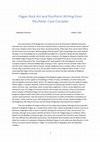
The early history of the Bulgarians in Europe has yet to be discovered. Medieval historians have ... more The early history of the Bulgarians in Europe has yet to be discovered. Medieval historians have left only a few mentions to cover their political history or spiritual and material culture. Many of the issues related to them have never been resolved positively. What does their name mean? Where do they come from in Europe? What language did they speak? That archaeology also cannot help fill the gaps in our knowledge was an unbreakable paradigm for a long time. Being nomads, Bulgarians were archaeologically invisible until the 8th century. However, the Bulgarian diaspora stretches from the Middle Volga through the Ponto-Caspian steppes to the Balkan Peninsula, Central Europe, and Italy. It seems that parts of the "Gens Bulgarorum" participated in the ethnogenesis of several European nations in the early Middle Ages, leaving no trace. Typical of many nomadic tribes. But is that the case? Unlike many other Eurasian nomads, Bulgarians have a unique culture: they use an archaic type of Runiform script. As its use has been limited to the religious sphere of life, it is not surprising that Pagan shrines and early cave churches are where the best examples of Bulgarian Runiform calligraphy can be seen. The paper examines Pagan Rock art and Runiform calligraphy from Murfatlar cave complex.
This article focus on the Runiform inscriptions and Pagan art found in the caves near the village... more This article focus on the Runiform inscriptions and Pagan art found in the caves near the village Tsarevets, Vratsa district, Bulgaria. Those meterials are analysed through comparisons with material from Bulgarian und Russian folklore and myths of some Siberian and East European people.
В тази част на статията са анализирани рунообразните надписи и изображенията открити в прабългар... more В тази част на статията са анализирани рунообразните надписи и изображенията открити в прабългарските пещерни храмове край врачанското село Царевец. Изследването им разкрива неизвестни страни на българската езическа митология и религия.
Това е втората част от поредицата посветена на скалното изкуство от пещерите по течението на река... more Това е втората част от поредицата посветена на скалното изкуство от пещерите по течението на река Искър, намиращи се недалеч от Врачанското село Царевец. В нея се представят снимки от пещерата Биярницата не влезли в първата част на тази поредица.
Статията е първа част на поредица, чиято цел е да представи скалните рисунки, надписите и геометр... more Статията е първа част на поредица, чиято цел е да представи скалните рисунки, надписите и геометричните мотиви врязани по стените на пещерите от местностите Среднио камик и Говедарника намиращи се на левия бряг на река Искър, недалеч от село Царевец Врачанско.
The work presents and analyses the Runiform inscriptions from Bulgar Pagan Temple of Krepcha. Ins... more The work presents and analyses the Runiform inscriptions from Bulgar Pagan Temple of Krepcha. Inscriptions and graphs from Krepcha are compared with materials from other ancient cites.
Paper discusses several early Runiform inscriptions. They are compared with inscription from Bul... more Paper discusses several early Runiform inscriptions. They are compared with inscription from Bulgaria. Also, some aspects of the origin of the script are examined as well as new reasings of few inscriptions are given.
In the paper is presented an interpretation of a runiform inscription- ligature from Greek codex ... more In the paper is presented an interpretation of a runiform inscription- ligature from Greek codex Roe 27. The content of the inscription shows symbiosis between shamanic and Christian views.
The paper presents an oracle bone inscription graphically similar to a Bulgar runiform inscriptio... more The paper presents an oracle bone inscription graphically similar to a Bulgar runiform inscription. Also there is signs that similarity extends to the semantics of both inscriptions. Those similarities are seen as evidence that Bulgar runiform script is a variant of Chinese writing derived from oracle bone script.
The paper presents evidence of Bregalnica mission of St. Cyril. Also, several Runiform inscriptio... more The paper presents evidence of Bregalnica mission of St. Cyril. Also, several Runiform inscriptions are examined and interpreted. In result, a connection between certain Runiform graphs and Glagolitic letter is established.
The paper introduces over 29 stone, brick and mortar bedding surfaces covered with Runiform grap... more The paper introduces over 29 stone, brick and mortar bedding surfaces covered with Runiform graphs, ligatures and inscriptions found in valley of Bregalnica, Republic North Macedonia. In addition, all graphs are analysed and compared with written material from other parts of Early Medieval Bulgaria.
Paper presents an attempt at deciphering of Murfatlar alphabet, a Runiform script used to write o... more Paper presents an attempt at deciphering of Murfatlar alphabet, a Runiform script used to write over 80 short inscriptions and graphs found at Rock Churches near village of Basarabi, Romania. The language assumed to be used there is Danube Bulgar, a language spoken in Early Medieval Bulgaria.


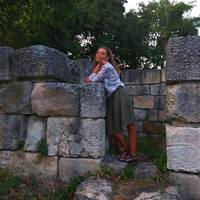

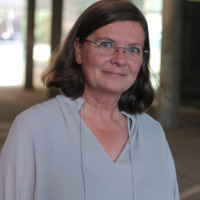

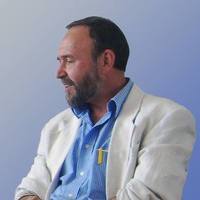
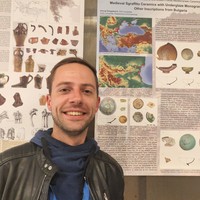


Uploads
Drafts by Nedyalko Ovcharov